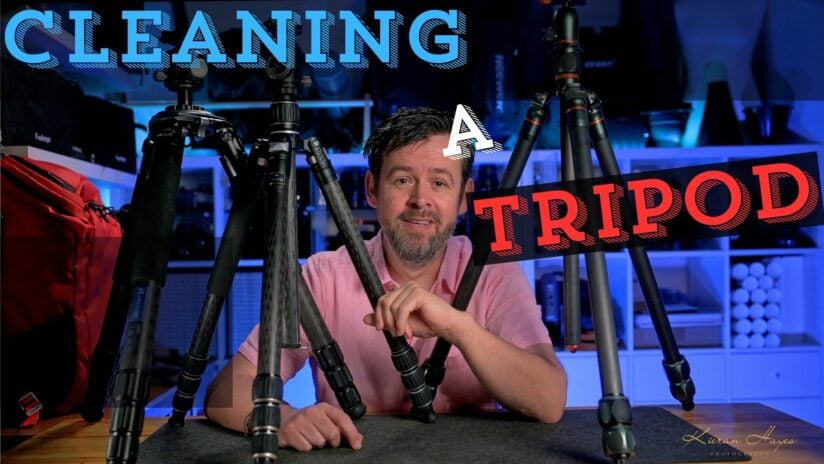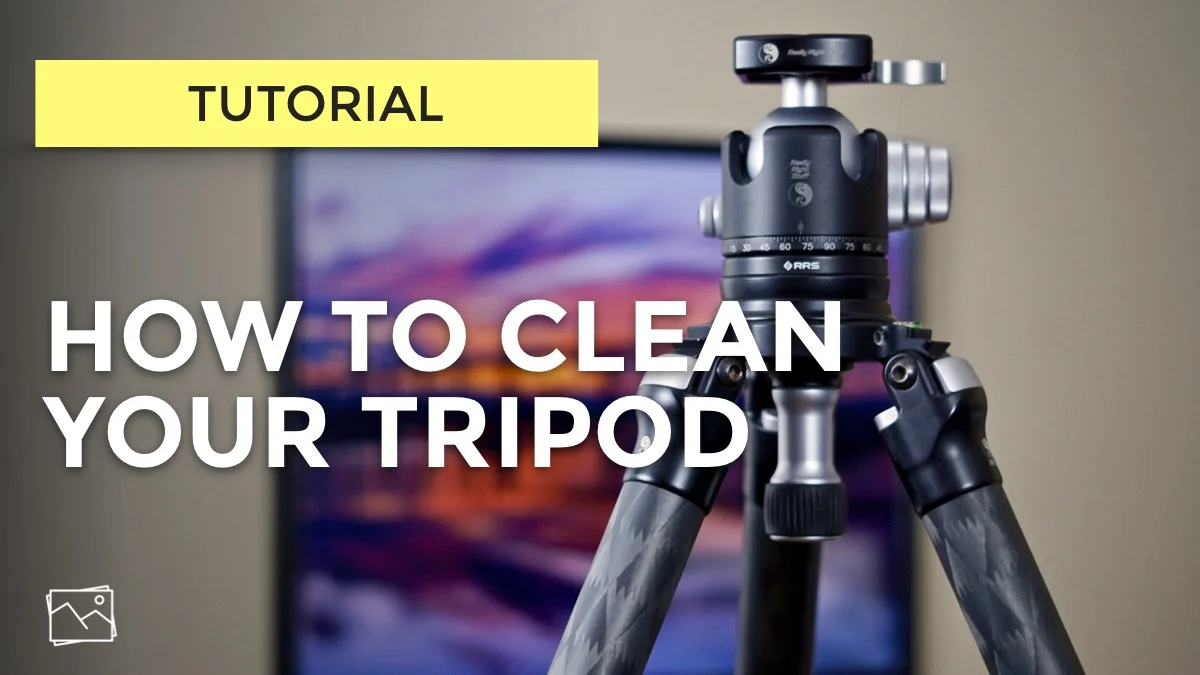Cleaning a tripod is simple. Regular maintenance ensures longevity and performance.
A clean tripod helps capture stable and clear images. Dust and grime can affect its function, making it less reliable. Regular cleaning keeps it in top shape, ready for any adventure. A few minutes spent on maintenance can prevent long-term issues.
This guide will show you how to clean your tripod effectively. You’ll learn easy steps for keeping it spotless. Let’s dive into this practical routine that every photographer should know. Whether you’re a professional or a hobbyist, maintaining your equipment is crucial. Keep your tripod clean, and it will serve you well for years.

Credit: www.kieranhayesphotography.com
Table of Contents
Importance Of Cleaning A Tripod
Cleaning a tripod keeps it working well. Dust and dirt can harm it. Regular care helps it last longer. This means fewer repairs. A clean tripod is a happy tripod. Always check for rust or damage. Fix small problems early. A clean tripod looks better too. It shines like new.
A dirty tripod may not work right. Smooth movement is key for good photos. Dust can make parts stick. Clean joints help it move freely. Tighten loose screws for safety. This keeps your camera safe. Wipe it down after each use. Use a soft cloth. Avoid harsh cleaners. They can damage it.

Credit: scottdavenportphoto.com
Essential Cleaning Tools
A basic cleaning kit for your tripod is essential. You need a soft cloth, a small brush, and some mild cleaning solution. The soft cloth helps to wipe away dust and dirt. The small brush reaches tricky spots. Use the mild cleaning solution for stubborn stains.
Sometimes, basic tools are not enough. Specialized tools can be very helpful. You might need a can of compressed air. It blows dust out of small spaces. A lens cleaning pen can also be useful. It is great for cleaning small parts.
Preparing For The Cleaning Process
Start by removing the leg locks. These are the clamps on the legs. Next, take off the center column. This part holds the camera. The head is where the camera sits. Unscrew it carefully. You might find some dust inside. Shake the legs gently to loosen dirt. Identify the key areas that need cleaning. Look for places where grime collects. These spots need special attention. A soft brush helps in cleaning. Use it gently around the legs. The feet of the tripod can be sticky. Clean them well to avoid dirt.
Cleaning Different Materials
Metal tripods can have dust and dirt. Use a soft cloth to wipe them. For stubborn dirt, use warm water. Dry them with a clean towel. Aluminum parts need gentle care. Avoid harsh chemicals. They can scratch the surface. Use a mild soap solution. Rinse with clean water. Dry thoroughly to prevent rust. Keep away from salty water. Salt can cause corrosion.
Carbon fiber is strong but needs care. Use a soft brush for cleaning. Brush away dirt gently. Avoid hard scrubbing. It can damage the fibers. Use a damp cloth for sticky spots. Wipe carefully. Dry with a soft towel. Never use strong cleaners. They can weaken the fibers. Store in a dry place. Moisture can harm the material.
Removing Dirt And Debris
Begin by wiping the tripod with a soft cloth. This removes loose dirt. Make sure the cloth is clean and dry. Gently run it over each part. Don’t miss any spots. Pay close attention to the joints. Dirt hides there easily. If needed, use a damp cloth for stubborn spots. Just make sure it isn’t dripping wet.
Using brushes for crevices is also helpful. Small brushes reach into tiny spaces. They remove dirt from cracks. Use a soft-bristle brush for this. It won’t scratch the tripod. Move the brush gently. Be patient and thorough. Clean every crevice. This keeps the tripod working well.

Credit: www.blog.promaster.com
Dealing With Stubborn Stains
Cleaning solutions help remove tough stains on tripods. First, pick a gentle solution. A mix of water and mild soap works well. Dip a cloth in the solution. Gently rub the stained area. For tougher spots, let the solution sit for a few minutes. It softens the stain for easy removal. Make sure to rinse the tripod well after cleaning. This prevents any soap residue from remaining.
Scrubbing techniques also play a key role. Use a soft-bristle brush for scrubbing. Scrub in small circles. This helps lift the stain effectively. Avoid using hard brushes. They might scratch the tripod surface. If the stain persists, repeat the process. Patience is key to getting the tripod clean. Always dry the tripod with a clean towel after cleaning. This stops water spots from forming.
Lubricating Moving Parts
Choosing the Right Lubricant is very important for your tripod. Always use a silicon-based lubricant. It works well with most tripod materials. Avoid using oil-based lubricants. They can attract dust and dirt. This can damage the tripod over time.
Before applying, clean the moving parts. Use a soft cloth to remove dust. This helps the lubricant work better.
Applying Lubrication is a simple process. First, apply a small amount of lubricant. Focus on the joints and hinges. These are the moving parts. Gently move the tripod legs. This helps spread the lubricant. Wipe away any extra lubricant with a cloth. Avoid using too much lubricant. It can cause the tripod to become sticky.
Regular lubrication keeps your tripod working well. It also makes it last longer.
Reassembling And Final Checks
After cleaning, carefully reassemble the tripod, ensuring all parts fit correctly. Perform final checks to confirm stability and functionality. Proper assembly ensures your tripod is ready for use.
Ensuring Proper Assembly
Check each piece before reassembling. Make sure all parts are clean. Look for dirt or dust. Use a soft cloth to wipe them. Align each leg properly. Tighten screws gently. Avoid forcing them. Handle with care to prevent damage.
Conducting Function Tests
Test the tripod after assembling. Extend each leg slowly. Make sure they lock well. Tilt and pan the head. Ensure smooth movement. Check the stability. Place it on a flat surface. Ensure no wobbling. Try adjusting height. Make sure everything works correctly.
Storing Your Tripod
Cleaning a tripod ensures long-lasting performance and smooth operation. Dust and dirt can accumulate over time, affecting stability. Use a soft cloth to wipe down each leg and joint, paying attention to crevices. A gentle brush can remove debris from tricky spots, keeping everything in top condition.
Regular maintenance makes storing your tripod easier and more effective.
Proper Storage Conditions
Tripods need a dry place. Humidity can cause rust. Dust can affect parts. Store your tripod indoors. Use a cover to protect it. Avoid direct sunlight. Sunlight can weaken materials.
Avoiding Common Mistakes
Don’t leave tripods outside. Rain can damage them. Avoid leaning tripods on walls. They might fall and break. Check locks before storing. Loose locks can cause falls. Keep the tripod clean. Dirt can harm moving parts.
Frequently Asked Questions
How To Get Sand Out Of A Tripod?
Remove sand by disassembling the tripod. Use a brush or compressed air to clean joints and locks. Wipe with a damp cloth and dry thoroughly. Regular maintenance prevents sand buildup. Store in a protective bag when not in use.
How To Take Care Of A Tripod?
Clean your tripod regularly with a soft cloth to remove dirt. Check and tighten screws often. Store it in a dry, cool place. Avoid exposing it to extreme temperatures. Lubricate moving parts periodically for smooth operation.
What Is The Best Thing To Clean A Camera With?
Use a microfiber cloth to clean your camera. It removes dust and fingerprints without scratching. For lenses, use a lens cleaning solution or pre-moistened lens wipes. Avoid household cleaners, as they may damage coatings. Keep the camera dry and store in a protective case when not in use.
How Do I Take The Top Off A Tripod?
To remove the top of a tripod, locate the locking mechanism. Twist or release it carefully. Detach the top by lifting or unscrewing it. Always handle with care to avoid damage. Check the user manual for specific instructions related to your tripod model.
Conclusion
Cleaning your tripod keeps it in great shape. Regular maintenance prevents rust and dirt buildup. Use a soft cloth for dusting. For stubborn spots, warm soapy water works well. Dry all parts carefully to prevent moisture damage. Pay attention to joints and locks.
They need special care. Proper cleaning extends the tripod’s life. It also ensures smooth operation during use. Remember, a clean tripod means better stability for your camera. So, make cleaning a part of your routine. Enjoy capturing stunning images with a well-maintained tripod.
Happy shooting!